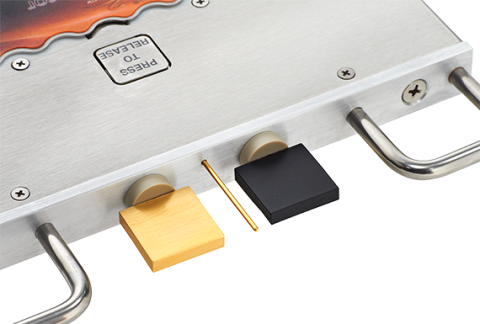Operators regularly look for increased efficiency in analyzing oven performance in commercial bakeries. This is a crucial aspect of ensuring consistent and high-quality baking results. Ovens are the heart of bakery operations, and their performance directly impacts product quality, production efficiency, and overall profitability. The SCORPION® 2 System from Reading Thermal can help you analyze your oven’s performance in a fraction of the time required for conventional methods.
Why Analysis is So Important
One of the primary reasons for analyzing oven performance is to ensure consistent and uniform baking results across different products and batches. Commercial bakeries produce a wide range of baked goods, each with unique requirements for temperature, humidity, and airflow. By analyzing oven performance, bakery operators can identify and address any deviations from the desired settings, ensuring that all products receive the optimal baking treatment for consistent quality.
Performance Parameters
Temperature control is one of the most critical parameters in oven performance analysis. Ovens must maintain precise temperature control throughout the baking process to achieve the desired product results. Variations in oven temperature can lead to uneven baking, overcooked or undercooked products, and inconsistencies in product quality. Analyzing temperature data, such as temperature profiles and deviations from set points, helps bakery operators identify any issues with temperature control and make adjustments as needed to optimize baking results.
Another important aspect of oven performance analysis is airflow management. Airflow plays a crucial role in heat distribution, moisture evaporation and product texture during the baking process. Improper airflow can result in uneven baking, leading to inconsistent product quality. By analyzing airflow patterns and velocity distribution, bakery operators can identify areas for improvement and adjust oven settings, such as fan speed and damper positions, to achieve optimal airflow conditions for uniform baking results.
Cycle times and production throughput are other key performance indicators in oven analysis. Cycle times refer to the duration of the baking process from loading to unloading, while production throughput measures the number of products baked per unit of time. Analyzing cycle times and throughput helps bakery operators assess oven efficiency, identify bottlenecks in production, and optimize workflow for maximum productivity. By optimizing cycle times and throughput, bakeries can increase production capacity, reduce operating costs, and meet customer demand more effectively.
Old-Fashioned and Advanced Methods
There are several methods used for analyzing oven performance in commercial bakeries, ranging from manual observation to advanced data logging and analysis techniques. Manual observation involves visually inspecting product quality, temperature profiles, and airflow patterns during the baking process to identify any issues or deviations from the desired standards. While manual observation provides valuable insights into oven performance, it’s limited in its ability to capture detailed data and trends over time.
On the other hand, data logging and analysis systems, such as the Reading Thermal SCORPION® 2 LITE Temperature Data Logger, offer a more comprehensive approach to oven performance analysis. It collects real-time data on oven conditions during the baking process. The data is then analyzed using software tools to generate temperature profiles, airflow patterns and other performance metrics, allowing bakery operators to identify trends, troubleshoot issues and make data-driven decisions to optimize oven performance.
If you want to learn more about Reading Thermal can speed the process of analyzing oven performance in commercial bakeries, use our online form or call 610-678-5890.

